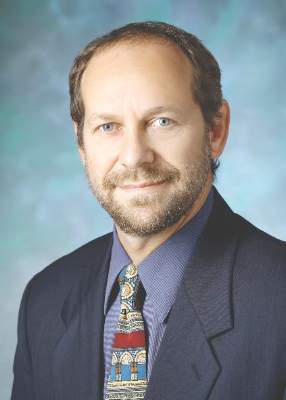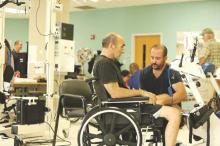New guidelines issued jointly by the American Heart Association and American Stroke Association are the first to define multidisciplinary terms for stroke rehabilitation in adults. The guidelines were published online May 4 in the journal Stroke.
Previous guidelines have focused on medical issues related to stroke and its immediate aftermath, but the new document recognizes the importance of rehabilitation to quality of life, according to lead author Carolee J. Winstein, Ph.D., of the University of Southern California, Los Angeles, and colleagues (Stroke. 2016 May 4. doi: 10.1161/STR.0000000000000098).
In response to health care reform, the temptation remains to pare down postacute care and rehabilitation, “but without recognition of their clinical impact and ability to reduce the risk of downstream medical morbidity resulting from immobility, depression, loss of autonomy, and reduced functional independence,” the researchers wrote.
Considering the importance of early rehabilitation after stroke, the guidelines emphasize that initial rehabilitation occur in an inpatient facility rather than a nursing home setting, and that patients and caregivers be educated about fall prevention to reduce the risk of accidents once the patient arrives at home.
The guidelines consist of five sections: The Rehabilitation Program, Prevention and Medical Management of Comorbidities, Assessment, Sensorimotor Impairments and Activities, and Transitions in Care and Community Rehabilitation.
• The Rehabilitation Program. Options for poststroke rehabilitation should start with inpatient care, the researchers said. “It is recommended that stroke patients who are candidates for postacute rehabilitation receive organized, coordinated, interprofessional care,” they noted. Evidence suggests that such care reduces mortality and improves recovery and independence.
• Prevention and Medical Management of Comorbidities. Stroke is associated with a range of comorbid conditions, and the recommendations highlight several areas for which stroke patients should be evaluated regularly during rehabilitation, including skin breakdowns, hemiplegic limbs, urinary retention, and deep vein thrombosis.
• Assessment. Assessment of stroke patients should include communication abilities, motor ability, and ability to perform activities of daily living, the researchers wrote. “Evaluation of a stroke survivor’s rehabilitation needs is best performed by an interprofessional team that can include a physician with expertise in rehabilitation, nursing, PT, OT, speech therapy, case management, psychology, and orthotics,” they said.
• Sensorimotor Impairments and Activities. The researchers identified evidence to support management of dysphagia, which occurs in 42%-67% of stroke patients within 3 days after stroke. Screening and attention to cognitive impairment, limb apraxia, and hemispatial neglect should be part of stroke rehabilitation, they noted. Additional recommendations include tailored exercise programs; eye, speech, and balance therapy; mobility training; and a cognitively enriching environment that may include books, music, computer, and virtual reality games.
• Transitions in Care and Community Rehabilitation. The transition process should involve individualized discharge plans depending on the patient’s need for additional services, the researchers noted. Alternative communication methods such as telemedicine, web-based support, are reasonable options, especially for patients in rural areas, they noted. Resuming a previous lifestyle including work, driving, and recreational activities is recommended based on a tailored assessment of the individual’s needs and abilities for a particular job or activity.
Successful stroke rehabilitation is a team effort across medical specialties, the researchers emphasized. Communication and coordination “are paramount in maximizing the effectiveness and efficiency of rehabilitation and underlie this entire guideline,” they said.
Future directions for research in stroke rehabilitation include exploring models of care that view stroke as a chronic condition, developing more effective predictor models, and using new technology for personalized interventions, the researchers added.
The statement is the eighth and last in a set of stroke guidelines that completes the ASA recommendations on the continuum of care for stroke patients and families. The authors based the recommendations on a review of the relevant medical literature through 2014.
The guidelines are endorsed by the American Academy of Physical Medicine and Rehabilitation, the American Physical Therapy Association, the American Occupational Therapy Association, the American Society of Neurorehabilitation, and the American Congress of Rehabilitation Medicine. The American Academy of Neurology affirmed the value of the guidelines as an educational tool for neurologists.
Dr. Winstein has received research grants from the National Institutes of Health and serves as a consultant to St. Jude Medical Business Services. Some of the other authors reported receiving grants from the National Institutes of Health and/or industry, as well as serving as consultants or on an advisory board for various companies.



